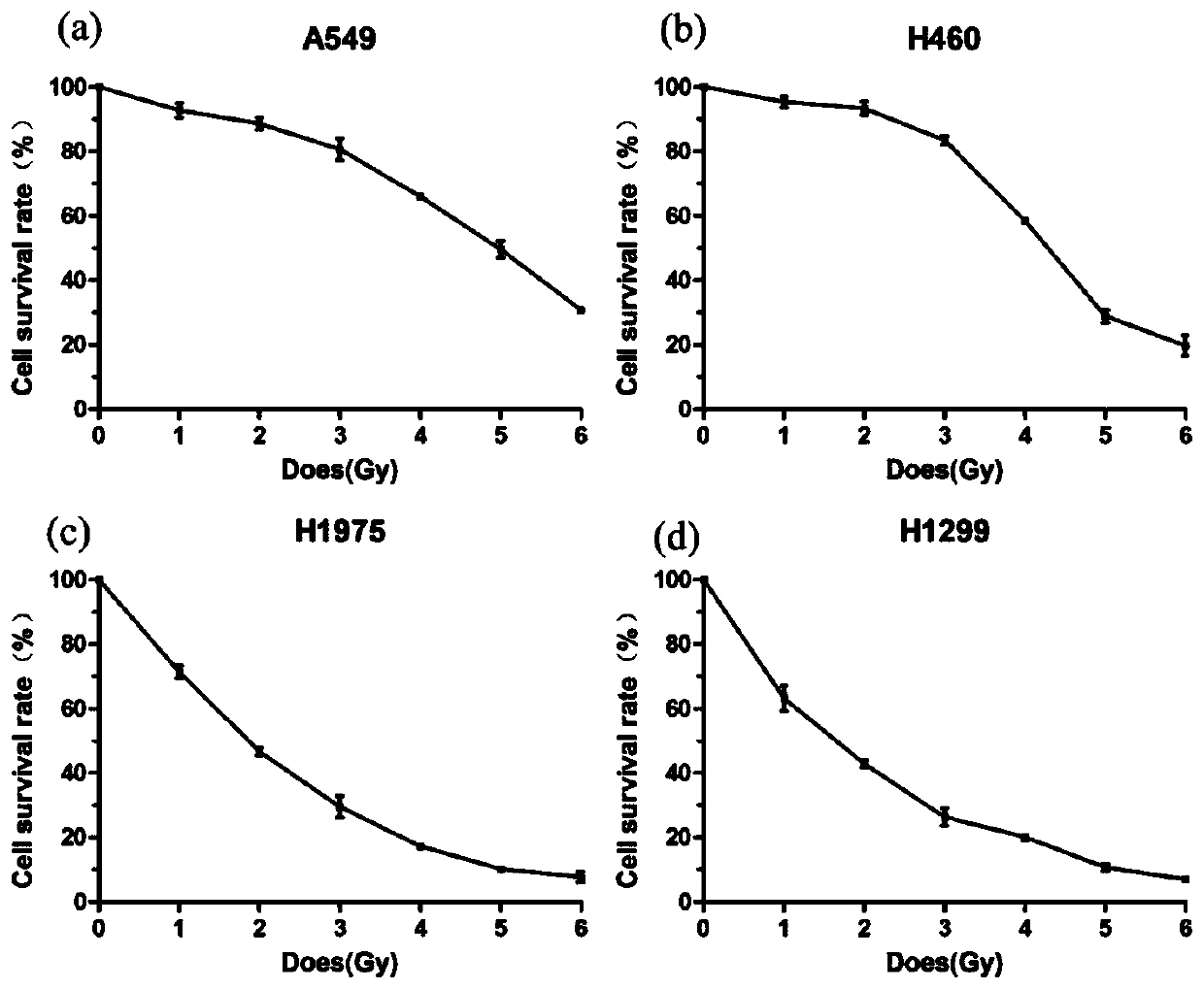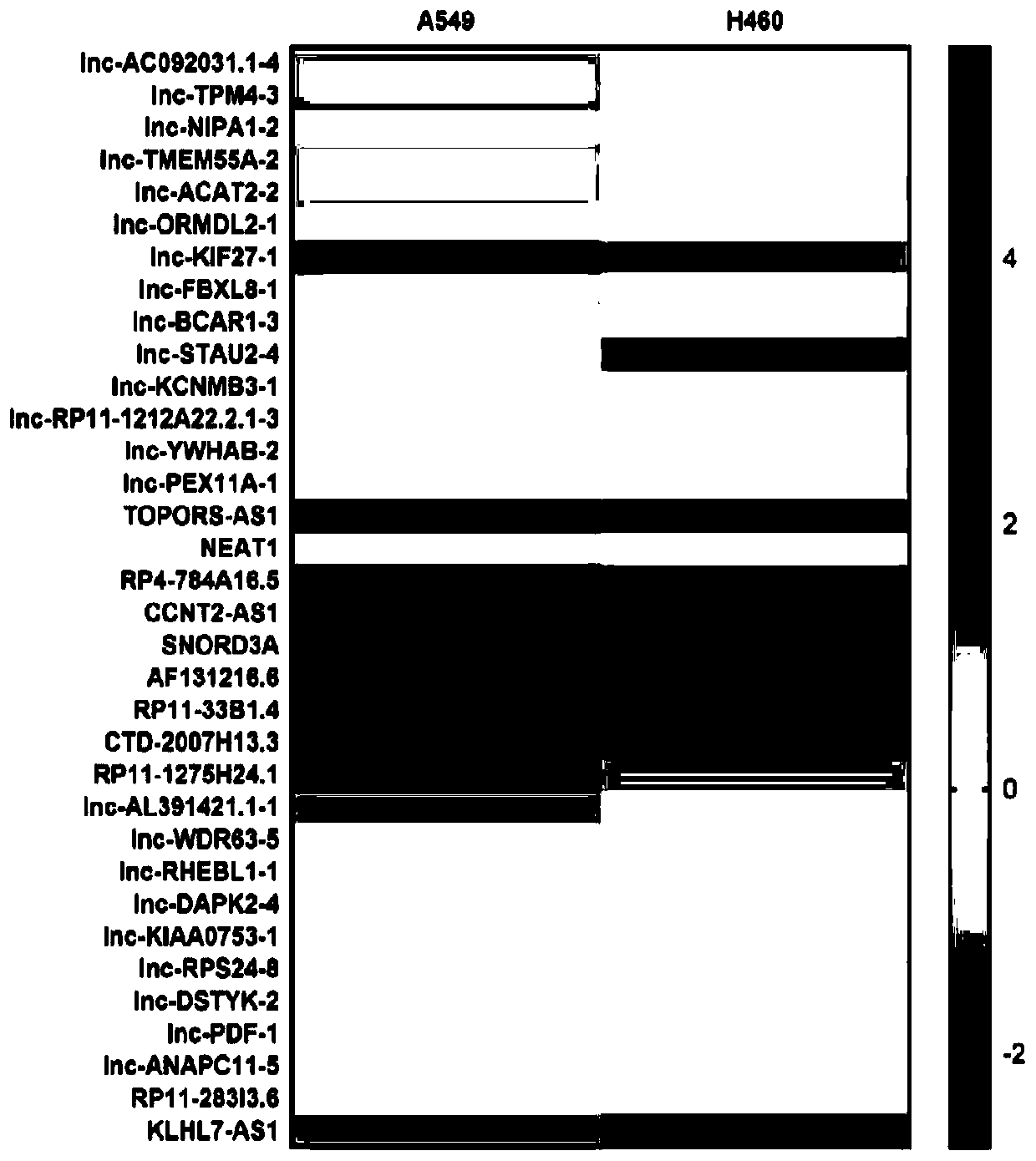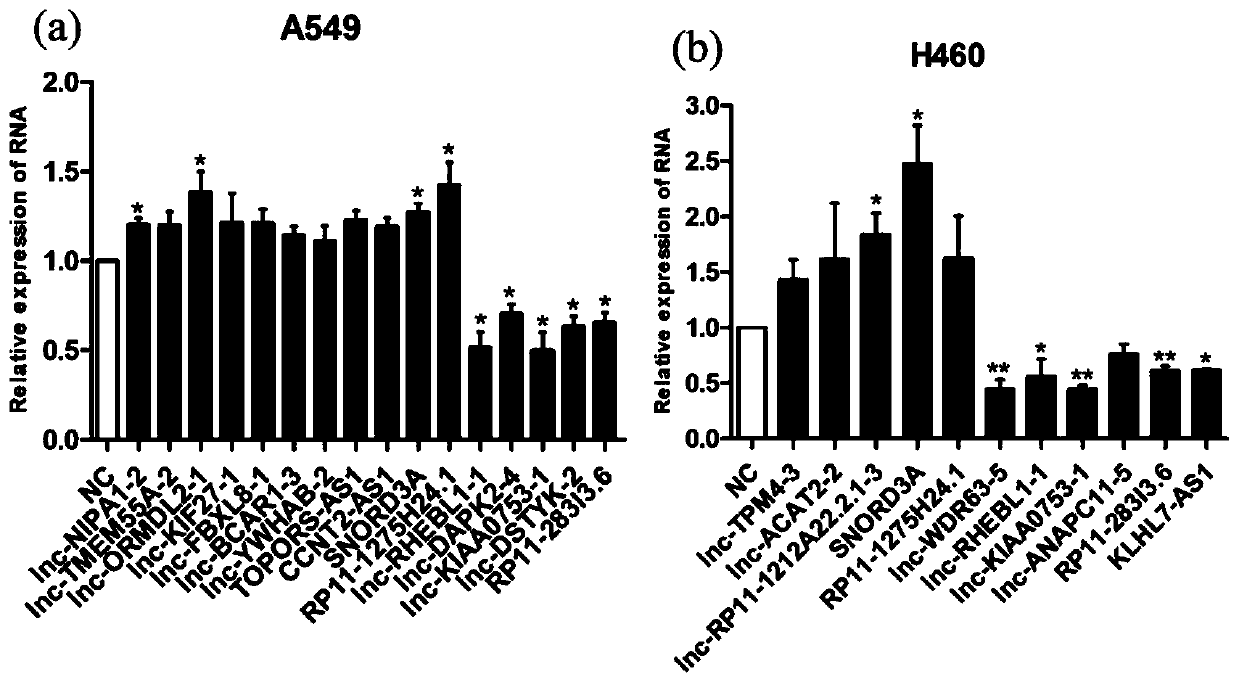Application of long-chain non-coding RNA lncLCIR-1 as lung cancer molecular marker
A technology of long-chain non-coding and molecular markers, which can be used in medical preparations containing active ingredients, measurement/testing of microorganisms, drug combinations, etc., can solve the problems of little research on the role of lncRNA, and achieve the ability to inhibit invasion and metastasis, Good stability and anti-proliferation effect
- Summary
- Abstract
- Description
- Claims
- Application Information
AI Technical Summary
Problems solved by technology
Method used
Image
Examples
Embodiment 1
[0036] Example 1. Changes in the expression of non-coding RNA in lung cancer cells after radiotherapy
[0037] Detect the expression changes of non-coding RNA in lung cancer cells after radiotherapy, and determine the non-coding RNA closely related to lung cancer radiotherapy by detecting the relative expression of non-coding RNA in tissue samples of lung cancer patients.
[0038] 1. Radiotherapy dose that is half lethal for lung cancer cells
[0039] The human lung cancer cell lines A549, H460, H1975, H1299 were recovered and cultured, and the cells were cultured to the logarithmic growth phase. The cells were trypsinized and suspended in 1640 medium for cell counting. Take different cell gradients (500, 800, 1000, 1500, 2000 / well) and spread them in a 96-well plate to ensure that the cells have sufficient nutrients, observe the cell growth status, and select the cell confluence of 80-90 after 1 week % Of the number of cells plated. After determining the number of plated cells, sp...
Embodiment 2
[0053] Example 2. Effects of nucleic acid molecules on lung cancer cells
[0054] Use small interfering RNA and overexpression plasmid vector to transiently transfect different lung cancer cells to change the expression of lncLCIR-1, and explore the effect of lncLCIR-1 on lung cancer cell proliferation, clone formation, cycle and invasion biological functions.
[0055] 1. The background expression level of lncLCIR-1 in lung cancer cells
[0056] RT-qPCR was used to detect the background expression level of lncLCIR-1 in A549, H460, H1975, H1299 cells, and RNA from A549, H460, H1975, H1299 cells was extracted, and RT-qPCR was performed after reverse transcription.
[0057] RT-qPCR reaction system: 2×SYBR Premix Ex Taq (TliRNaseH Plus) 5μL, 50×ROXReference Dye 0.04μL, upstream and downstream primers (10μM) 0.5μL, cDNA 0.6μL, ultrapure water 3.86μL, total 10μL.
[0058] RT-qPCR reaction conditions: 94℃15s; 95℃5s, 60℃30s, 45 cycles; 72℃10min, 4℃1min.
[0059] Among them, the upstream and down...
PUM
 Login to View More
Login to View More Abstract
Description
Claims
Application Information
 Login to View More
Login to View More - R&D
- Intellectual Property
- Life Sciences
- Materials
- Tech Scout
- Unparalleled Data Quality
- Higher Quality Content
- 60% Fewer Hallucinations
Browse by: Latest US Patents, China's latest patents, Technical Efficacy Thesaurus, Application Domain, Technology Topic, Popular Technical Reports.
© 2025 PatSnap. All rights reserved.Legal|Privacy policy|Modern Slavery Act Transparency Statement|Sitemap|About US| Contact US: help@patsnap.com



